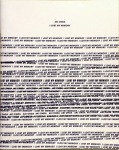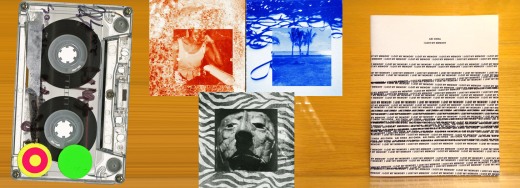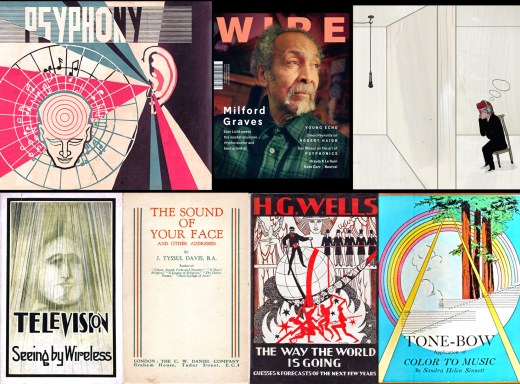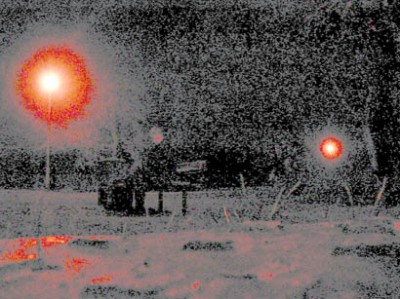It’d be remiss to end 2023 without mentioning two extraordinary new books: Radio Art Zone and Strange Attractor Journal Five (more details on the main blog). The Strange Attractor Journal, first launched in 2004, has become (in my mind at least) the proverbial ‘institution’ for its dedicated coverage of the weird, the obsessional, and the sidereal. This year sees its long-awaited fifth volume, which, as luck would have it, features my text ‘Electromania: The Victorian Electro-Musical Experience’ alongside other fascinatingness. My short essay covers the now-forgotten electrical entertainment craze in the Victorian music halls, introducing archival material I’ve amassed. It also examines the distinctions between electrical and electronic music from a Victorian standpoint: the electrically-triggered effects of Johann Baptist Schalkenbach are contrasted with the lesser acclaimed (yet more advanced) contemporaneous performances of Cromwell F. Varley’s telephonic concert at Queen’s Theatre, Covent Garden, 1877, featuring would-be electronic signals diffused through a proto-loudspeaker: a suspended drum.
Also just published is the Radio Art Zone book which comes hot on the heels of Knut Aufermann and Sarah Washington’s epic Radio Art Zone 100-day broadcast in 2022. Each contributor to the temporary radio station supplied a 22-hour radio show. Mine was ‘Asphyxia: The “Idiote”, the Library Wifi and the Suppressed Safe’ which took the unstable form of ‘reality radio’, replete with electroacoustic interventions and on-site recordings at the British Library (more details on my main blog). Quoth the description: “With the aid of a banned device found whilst bin-diving, it is here that the protagonist entertains himself by tapping the hundreds of Wifi connections, perving over the data passing through the library’s network. The discovery of an anomaly in the library catalogue reveals an unnamed ‘Book X’ deemed so dangerous that anybody who orders it is spirited away.” The titular “Suppressed Safe” is the name of the British Library’s collection of suppressed items. Bizarrely, ‘Asphyxia’ has proven prophetic, as the British Library faced a severe cyberattack in October this year, and its systems remain mostly offline, as is their public Wifi. The British Library’s policy of maintaining public silence on the exact details (on the advice of the National Cyber Security Centre) is suggestive of the ‘need-to-know basis’ and informational hysteria explored in ‘Asphyxia’. An unusual coincidence.
The Radio Art Zone book, released last month, is an extraordinary collection of art and writing curated/edited by Sarah Washington. Its topic is radio art itself, and contains responses on the subject from a wide range of contributors. My offering is ‘On Radio Obscurity and Infinite Regress’ – a text on thwarted histories and lost transmissions (having some bearing upon the newly minted ‘lostwave’ genre) also touching upon the early wireless radio oscillation phenomenon. At the front of the book, Sarah had the inspired idea of featuring the cover of a little Wireless Diary I’d found (also cited in the text), belonging to adolescent radio listener-in Thomas Moorfield Norris (1915-1932) who had built his own custom radio, chronicling nightly adventuring into the airwaves in 1931.
The main Miraculous Agitations blog has more information. At the close of 2023 I should also give nod to the memorable ‘Disquietings’ event in Leicester, back in August. It was organised by film-maker William English, and featured a premiere of Sandra Cross’ film Ex Post Facto forming a case-study of the extremities of artistic temperament with a Leicester backdrop. I performed a primer on miraculous agitations there. Also billed were Secluded Bronte and Bob Parks (with troupe). Whilst staying in Leicester, it was nice to walk around Leicester with William, Sandra, and Secluded Bronte’s Bohman brothers and Richard Thomas. Regarding ‘miraculous agitations’, Richard told me of an incredible miraculous moment which had once occurred: he described having flicked a cigarette onto the ground, which embedded itself vertically between the cracks in the pavement, and at that exact moment a dog barked. Is there a moral to the story? Not necessarily, but I’m forced by convention to finish this blogpost with an uplift… All that can be said is such small instances are somehow encouraging, surprising us out of linearity for a moment, fostering creative thought. Let Richard’s miraculous vertical dog-cigarette encourage us into 2024.




 Oscillatorial Binnage’s ‘
Oscillatorial Binnage’s ‘ Oscillatorial Binnage is
Oscillatorial Binnage is 
 An artist’s book has been published to coincide with
An artist’s book has been published to coincide with 

 With chemical reactions – or ‘goceptions’ – in mind, a longer
With chemical reactions – or ‘goceptions’ – in mind, a longer 

